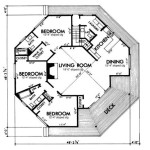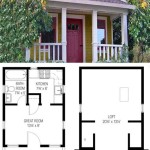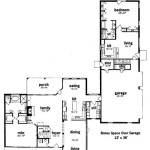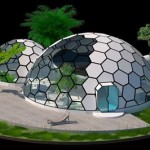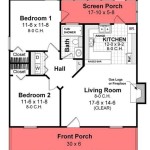Design House Floor Plans: Create Your Dream Home (Community Edition)
Designing a house floor plan represents a significant undertaking, a fusion of personal aspiration and practical consideration. It's a process where abstract desires for a home are transformed into concrete blueprints, capable of guiding construction and defining future living spaces. The "Community Edition" emphasizes collaborative aspects, involving perspectives from family members, potential builders, and even broader neighborhood influences to shape a design that truly fits within its environment and purpose.
The initial stages of floor plan design typically involve defining the homeowner's needs and lifestyle. This entails carefully considering how the space will be used, how many people will reside in the home, and what functional requirements must be met. Are frequent guests expected? Are there needs to accommodate elderly family members or individuals with disabilities? Does the homeowner work from home, requiring a dedicated office space? All such inquiries contribute to a comprehensive understanding of the design requirements.
Once needs are established, the focus shifts to defining the desired style and aesthetic. This involves exploring various architectural styles, from traditional to contemporary, and identifying the elements that resonate with the homeowner's taste. Considerations include roofline, window placement, exterior materials, and the overall impression the house should make. This stylistic vision then strongly influences the layout and organization of interior spaces.
The Community Edition aspect introduces a critical layer to this process. It encourages soliciting input from various stakeholders. Family members contribute their individual needs and preferences, ensuring the design works for everyone sharing the space. Engaging with potential builders early can prevent costly design errors and ensure constructability within budget constraints. Feedback from neighbors or community associations can address local building codes, environmental concerns, and aesthetic compatibility with the surrounding area. This collaborative approach ensures the design reflects a collective vision and minimizes potential conflicts later in the process.
Budgetary considerations are paramount throughout the design phase. Establishing a realistic budget early on helps guide decisions about size, materials, and finishes. It's essential to understand the cost implications of different design choices and prioritize accordingly. The Community Edition can also facilitate price comparisons among potential builders, providing valuable insights into cost-effective construction practices.
Key Point 1: Understanding Spatial Requirements
A critical element of house floor plan design is determining the appropriate sizes and relationships between different rooms. This involves accurate space planning, ensuring that each room is adequately sized for its intended purpose while also considering how rooms connect and flow together. Common mistakes include undersized kitchens, cramped bathrooms, and awkwardly placed hallways.
Living areas, such as living rooms and family rooms, should be spacious enough to accommodate furniture and activities comfortably. The size of these spaces depends on the number of occupants and the intended use, whether it's for casual relaxation, formal entertaining, or a combination of both.
Kitchens require careful planning to ensure efficient workflow and adequate storage. Considerations include the placement of appliances, the layout of countertops, and the availability of sufficient pantry space. An island or peninsula can enhance functionality and provide additional counter space, but it must be sized and positioned appropriately to maintain comfortable circulation.
Bedrooms should be sized to accommodate beds, dressers, and other essential furniture. The number and size of closets should be determined based on storage needs. Master bedrooms often include en-suite bathrooms and walk-in closets, adding to the overall space requirements.
Bathrooms require careful planning to ensure proper ventilation and adequate space for fixtures and storage. Considerations include the placement of toilets, sinks, showers, and bathtubs. Accessibility should also be considered, particularly for bathrooms intended for elderly or disabled individuals.
Hallways and circulation spaces should be wide enough to allow for comfortable movement throughout the house. Narrow hallways can feel cramped and claustrophobic, while excessively wide hallways can waste valuable floor space. The layout of hallways should also minimize sharp turns and obstructions to ensure easy navigation.
The relationship between different rooms is also critical. The kitchen should be conveniently located near the dining area, and the living room should be easily accessible from the entryway. Bedrooms should be grouped together in a quiet area of the house, away from noisy living areas. The placement of bathrooms should be strategic, ensuring easy access from bedrooms and living areas.
Key Point 2: Integrating Sustainable Design Principles
Modern house floor plan design increasingly incorporates sustainable design principles to minimize environmental impact and promote energy efficiency. This involves considering factors such as building orientation, natural lighting, ventilation, and material selection. By thoughtfully integrating these principles, it's possible to create a home that is both comfortable and environmentally responsible.
Building orientation plays a significant role in energy efficiency. Positioning the house to maximize exposure to sunlight during the winter and minimize exposure during the summer can reduce heating and cooling costs. Southern exposure is generally ideal for passive solar heating, while shading devices can be used to block excessive sunlight during the summer.
Natural lighting can significantly reduce the need for artificial lighting, saving energy and creating a more pleasant indoor environment. Large windows and skylights can bring natural light into the house, but it's important to consider their placement to avoid glare and overheating. Light shelves and reflective surfaces can help distribute natural light more evenly throughout the space.
Natural ventilation can reduce the need for air conditioning, improving indoor air quality and saving energy. Operable windows and doors can be strategically placed to create cross-ventilation, allowing fresh air to circulate through the house. High ceilings and clerestory windows can also enhance natural ventilation by promoting the stack effect, where warm air rises and escapes through upper windows.
Material selection is also critical for sustainable design. Choosing durable, locally sourced materials with low embodied energy can reduce the environmental impact of construction. Recycled and reclaimed materials can also be used to reduce waste and conserve resources. Selecting non-toxic materials can improve indoor air quality and protect the health of occupants.
Other sustainable design features include rainwater harvesting, greywater recycling, and solar energy systems. Rainwater harvesting can be used to collect rainwater for irrigation and other non-potable uses. Greywater recycling can be used to treat wastewater from showers, sinks, and laundry machines for reuse in toilets and irrigation. Solar energy systems can be used to generate electricity and heat water, reducing reliance on fossil fuels.
Key Point 3: Utilizing Digital Tools for Design and Visualization
Digital tools have revolutionized the house floor plan design process, providing architects and homeowners with powerful tools for creating, visualizing, and modifying designs. Software programs offer a wide range of features, from basic drafting tools to advanced 3D modeling and rendering capabilities. These tools can significantly enhance the efficiency and accuracy of the design process, allowing for greater experimentation and collaboration.
Computer-Aided Design (CAD) software is commonly used for creating 2D and 3D floor plans. CAD programs provide precise drawing tools and libraries of pre-designed components, allowing architects to quickly create accurate and detailed plans. CAD software also allows for easy modification and iteration of designs, making it possible to explore different options and refine the design based on feedback.
Building Information Modeling (BIM) software takes CAD to the next level by creating a virtual model of the entire building, including structural, mechanical, and electrical systems. BIM models can be used to simulate building performance, identify potential design conflicts, and generate construction documentation. BIM software facilitates collaboration among different disciplines, allowing architects, engineers, and contractors to work together more efficiently.
3D modeling and rendering software allows for creating realistic visualizations of the house, both interior and exterior. These visualizations can help homeowners understand the design and make informed decisions about materials, finishes, and furniture placement. 3D models can also be used for marketing and sales purposes, allowing potential buyers to visualize the finished product before construction begins.
Online floor plan design tools offer a more accessible and user-friendly option for homeowners who want to experiment with different layouts and design ideas. These tools often provide drag-and-drop interfaces and libraries of pre-designed furniture and fixtures, making it easy to create basic floor plans without requiring extensive technical skills. Some online tools also offer 3D visualization capabilities, allowing users to see their designs in a realistic setting.
Virtual reality (VR) and augmented reality (AR) technologies are increasingly being used in house floor plan design. VR allows homeowners to immerse themselves in a virtual model of their future home, providing a realistic sense of space and scale. AR allows homeowners to overlay virtual objects and designs onto their existing environment, allowing them to visualize how furniture and other elements will fit into their space. These technologies can significantly enhance the design experience and help homeowners make more informed decisions.
These digital tools, used in conjunction with the collaborative spirit of the Community Edition, ensure the final floor plan accurately reflects the needs, aesthetics, and budgetary parameters of all involved, culminating in a dream home truly representative of its inhabitants and surroundings.

Free Floor Plan Creator Design 2d 3d Layouts Easily

How To Draw A Floor Plan Live Home 3d

Free Floor Plan Creator Design 2d 3d Layouts Easily

16 Best Free Home And Interior Design Tools

Free Simple Two Story House Plans

Create And Visualize House Plans In Minutes Roomsketcher

3d Home Design Free Easy House Plan And Landscape Tools Pc Mac

Free Simple Two Story House Plans

How To Draw Accurate Floor Plans Step By Guide

12 Examples Of Floor Plans With Dimensions
Related Posts

